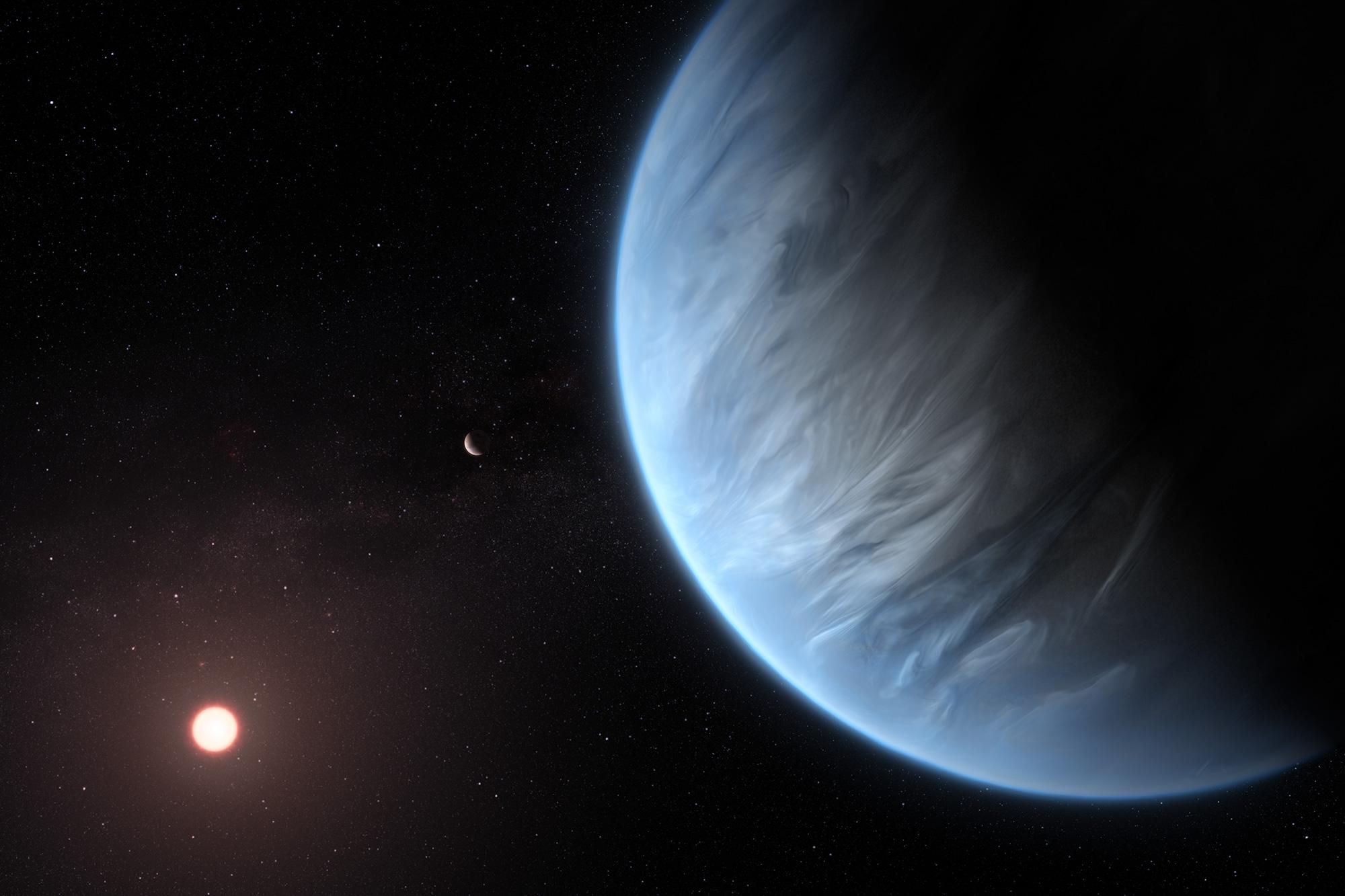Leaking atmospheres seal the fate of planets

A new tool makes it possible to model the escaping atmosphere on exoplanets without overbooked space telescopes.
All planets lose their atmosphere. Each day, around 90 tonnes of hydrogen and helium escape from Earth in the direction of space – but don't panic; at this rate, we've still got enough to last another 150 billion years. Our neighbour Mars is in a less enviable position. Today, its atmosphere is one hundred times less dense than that of our planet. Sometimes, the same drama takes place at an accelerated rate. Several tens of light-years away from the solar system, some gaseous exoplanets orbit in close proximity to their star. Their atmosphere is burning up and its overheated molecules have enough energy to escape from gravity en masse.
With the support of the SNSF, David Ehrenreich's laboratory at the University of Geneva has devel-oped p-winds, a computer tool that models atmospheric escape for exoplanets. Written in the pro-gramming language Python, this open-source tool can be accessed by the entire scientific community.
Alternative to space telescopes
Hubble and the few other space telescopes are vital for studying exoplanetary atmospheric escape. Through them, hydrogen – the lightest element, and therefore the one most likely to escape – can be seen in the ultraviolet spectrum. Because this frequency of radiation is filtered by the Earth's atmos-phere, the phenomenon has to be observed from outer space.
But another phenomenon can be measured at ground level: helium leaks. They are visible in the infra-red spectrum, which passes through our atmosphere easily. "P-winds makes it possible to model es-capes based on the helium detected in the infrared spectrum," explains Leonardo Dos Santos, who developed the code as part of his doctorate at Geneva. "We designed it to interpret observations in the infrared spectrum and to provide an alternative to space telescopes, for which it is very time-consuming and difficult to get observation time."
The software is not yet able to estimate the total amount of escape, warns the researcher. "We would need to have a more accurate idea of the ratio of hydrogen to helium in different types of exoplanet, in order to calculate the former based on the latter."
Former giants
To date, 5000 exoplanets have been identified. "Ultra-hot Neptunes" are amongst the rarest of these. Of a similar size to their namesake in the solar system, they are so close to their star that their sur-face heat exceeds 2000°C. At these temperatures, gases escape extremely quickly.
"This type of planet may be so rare precisely because they have lost most of their atmosphere," ex-plains Dos Santos. "One could imagine that they were once giants the size of Jupiter, and have shrunk to two or three times the Earth's diameter. By modelling the phenomenon, p-winds could test this hy-pothesis."
Despite the tens of light-years that separate us from these celestial bodies, these questions are also relevant to our planet. "Earth doubtless lost a large part of its atmosphere at the start of its existence," explains Dos Santos. "The physics is the same, whether we're talking about an ultra-hot Neptune or our own planet. When we understand how these ultra-hot Neptunes lose their atmosphere so quickly, we can adapt our model to predict the long-term future of exoplanets similar to the Earth."